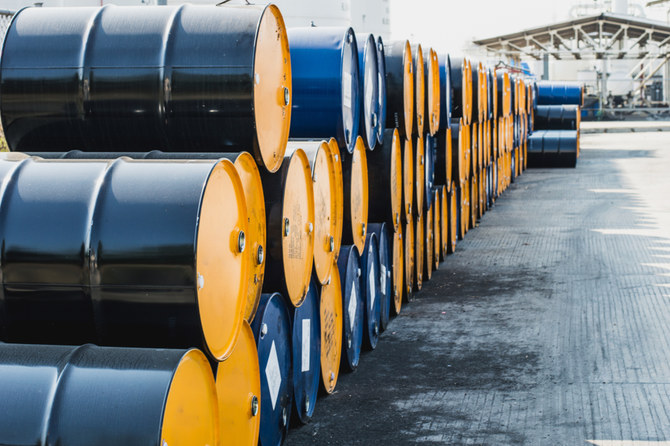SINGAPORE: Oil prices rose on Wednesday after industry data showed a bigger-than-expected draw in US crude stockpiles, while the market kept tabs on flaring tensions in the Middle East, according to Reuters.
Brent crude futures edged up 46 cents, or 0.5 percent, to $86.70 per barrel at 9:45 a.m. Saudi time. US West Texas Intermediate crude futures climbed 42 cents or 0.5 percent to $83.23 per barrel.
On Tuesday, both benchmarks rose to their highest since the end of April in intraday trading but closed down on the day as fears faded that Hurricane Beryl would disrupt production in the Gulf of Mexico. It is expected to weaken into a tropical storm by the time it enters the Gulf of Mexico later this week, according to the US National Hurricane Center.
“Having gained previously due to fears of supplies disruption from Hurricane Beryl, there may be some unwinding as greater clarity points toward limited potential impact,” said Yeap Jun Rong, a market strategist at IG.
“That said, a significant drawdown in US crude inventories offered some support for prices, while tensions in the Middle East continue,” Yeap added.
US crude oil inventories fell by 9.163 million barrels in the week ended June 28, according to market sources citing American Petroleum Institute figures on Tuesday. However, gasoline inventories rose by 2.468 million barrels, and distillates fell by 740,000 barrels.
Analysts in a Reuters poll had expected a 700,000-barrel draw in crude inventories, a 1.3-million-barrel drop in gasoline stocks, and a 1.2-million-barrel fall in distillates stocks.
“Oil prices were supported by a US crude inventories draw, but gains were limited as some investors were still seeking to take profits from the recent rally to reach the highest levels since April,” said Mitsuru Muraishi, an analyst at Fujitomi Securities.
The Energy Information Administration, the statistical arm of the US Department of Energy, is due to release its weekly data on Wednesday at 5:30 p.m. Saudi time.
Meanwhile, US gasoline demand is expected to ramp up as the summer travel season picks up with the Independence Day holiday this week. The American Automobile Association has forecast that travel during the holiday period will be 5.2 percent higher than in 2023, with car travel up 4.8 percent.
In the Middle East, Israeli forces bombarded several areas of the southern Gaza Strip on Tuesday, with thousands of Palestinians fleeing their homes. The Israeli military and the Lebanese armed group Hezbollah have also been trading fire across Lebanon’s southern border.
“The risk of an Israel-Hezbollah war, combined with the risk of a broadening conflict in the Middle East, likely means upside risks to our near-term outlook,” said Vivek Dhar, an analyst at Commonwealth Bank of Australia.
The Organization of the Petroleum Exporting Countries’ oil output rose in June for a second consecutive month, a Reuters survey found on Tuesday, as higher supply from Nigeria and Iran offset the impact of voluntary supply cuts by other members and the wider OPEC+ alliance.























